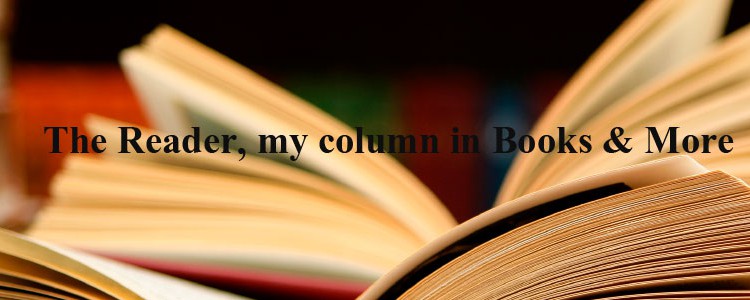Metro Reads, Penguin Books India’s commercial fiction list, 2 Sept 2012
(This article was published in the Hindu Literary Review on 2 Sept 2012. Here is the link: http://www.thehindu.com/todays-paper/tp-features/tp-literaryreview/article3849375.ece )
)
Rajni blew her hair away from her face. My heart skipped a beat. ‘I love you!’ I blurted out. Her cheeks turned a deep pink. I could sense that her anger had completely disappeared.
Anup, a happy-go-lucky boy next door, finds himself a misfit in an IT company. On the bright side, he has great friends in office—Chetan, Subbu and Parag—to help him out of sticky situations. Also, in the same office is the love of his life, Rajni. But Rajni’s strict family and her paranoia of tongue-wagging colleagues play villain in their love story forcing him to be satisfied with clandestine meetings, secret phone conversations and emails. Just as Anup decides to turn over a new leaf, sinister happenings at work force him to take some life-changing decisions—to quit his job and pursue his long-cherished dream of becoming a writer; and also, to marry Rajni.
Love Over Coffee by Amrit N. Shetty
‘All these bangers have gone and simply put us in trouble.’
I blinked. ‘Bangers?’
‘All those foreign bangers, you know,’ he said. ‘Recession, sub-prime, liquidity crunch. All bloody bakwaas. Making a fool of us.’
I remained silent. I hoped he wouldn’t ask me about my work!
Jack Patel’s Dubai Dreams by P.G. Bhaskar
Metro Reads. A list of commercial fiction established by Penguin Books India that has gained sufficient significance in less than two years to be granted its own space as an imprint. (It now boasts of its own logo!) It was established in January 2010 with Love Over Coffee by Amrit N. Shetty; Where Girls Dare by Bhavna Chauhan and Dreams in Prussian Blue by Paritosh Uttam. According to its website, these books “do not weigh you down with complicated stories, don’t ask for much time or do not required to be lugged about”, they are “fun, feisty and easy-to-read” books. This is a list that encompasses all genres – chik lit, murder mysteries, “romance-thriller” etc. According to Vaishali Mathur, Commissioning Editor, Metro Reads, “We felt that there was a great need in the market to have books for the youth. The college students and the working population which finds difficult to read heavy literature and prefers to read books that they enjoy, storylines that they can relate to and characters whom they can identify with. Penguin Metro Reads basically publishes what the reader would enjoy rather than what we as publishers would like them to read.” Earlier about 8-10 books a year were being published, but due to the great response from the readers, in 2012 the number has grown over a hundred per cent to about 20 titles. To put this in perspective, it is one-third more than the average output of a successful independent publisher.
Vaishali adds that most of “these authors are new as this imprint encourages them. In the past two years we’ve published more than thirteen new authors, but we are publishing Ravinder Singh’s Can Love Happen Twice? in December and this is his second book. With a target audience of 18-35 year olds, it does tend to blur the lines between young adult and trade fiction, and yet, it has created a neat little identity of its own. The tag line for these books is that it is meant “For the Reader on the Go”. The average sales of this list are doing well and if stories doing the rounds of publishing are to be believed, then even the pre-order sales of some titles are phenomenally robust. More often than not, these books work on volume sales. Some of the biggest bestsellers of this list have been Madhuri Bannerjee’s Losing My Virginity and Other Dumb Ideas, Love Over Coffee, and P.G. Bhasker’s Jack Patel’s Dubai Dreams. Last December, Ravinder Singh’s Can Love Happen Twice? has sold over two lakh copies. It has also been translated into Hindi. Considering the range of genres it tackles it has the potential of doing well overseas as well, especially amongst the Indian diaspora. Having said that, the rights of some of these books have only been sold into Malayalam, otherwise customers have been buying their copies directly from India.
Metro Reads has a distinctive identity with its snazzy book covers in pure colours and the edge of the pages painted red (very reminiscent of the Georgette Heyer books published in the 1950s). With Metro Reads, Penguin Books India is tapping a niche market that is growing rapidly. It consists of more than thirty per cent of the population that is literate, and eager to read in English and improve their language skills. Plus they have the disposable income (and plastic money) to buy what appeals to them at an impulse. These books are largely conversation-driven plots, with barely any use of nuanced language, but edited well, so easy to read. Reading light fiction also helps to kill time while commuting daily to work or stuck for long hours in a long distance journey. In a sense, after eighty years, Sir Allen Lane’s vision of high quality paperback fiction being made available to the mass market, at an affordable price and edited well is finally coming true. Yet, it does take away from the personalized attention of an editor once the list begins to grow at this rapid pace.
Vaishali is extremely upbeat about this imprint and the future plans for it are plenty. “We already have readers who identify with this imprint and want to read books published under it. We also have writers who send their manuscripts for this imprint. We are already working with the vision of building a stronger author list, introducing more and more variety by publishing in different genres of commercial writing, making the brand stronger.”


